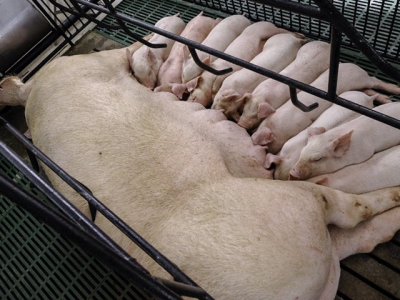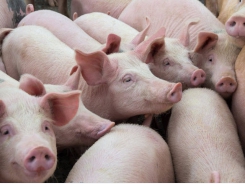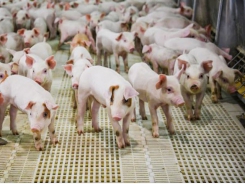What factors affect sow colostrum yield and composition?

Researchers, based in Finland and Estonia, have found that prolonged duration of farrowing can be detrimental for colostrum yield (CY).
The animal scientists also saw that body condition and physiological status of the sow around farrowing can affect CY, and, thus, increase piglet mortality and use of antibiotics in neonatal piglets.
Background
The research team cited studies showing that pre-weaning piglet mortality ranges from 10 to 13% in the principal pig-breeding countries with insufficient colostrum intake (CI) being one of the major causes of mortality.
“Studies reported that approximately 30% of hyper prolific sows produce insufficient colostrum for their litters (Quesnel et al., 2012, Decaluwé et al., 2013), despite colostrum being the only source of energy and passive immunity for the neonate (Rooke and Bland, 2002, Le Dividich et al., 2005).”
Hyper prolific sows apparently also have a longer farrowing duration (Björkman et al., 2017), which could impair colostrum production (Algers and Uvnäs-Moberg, 2007), they added.
Most pre-weaning mortality occurs during the first three days after birth (Le Dividich et al., 2005, Shankar et al., 2009, Muns et al., 2016), continued the authors. Inadequate CI by the piglet is a leading cause of mortality during the first days after birth due to hypoglycemia, and consequently hypothermia (Le Dividich et al., 2005), they said.
In addition, insufficient intake of maternally-derived immunoglobulins (Ig) has a negative effect on piglet health status, which has a carry-over effect on weight gain and survival (Decaluwé et al., 2014, Quesnel et al., 2012, Declerck et al., 2016).
Study goals
In that context, the researchers said the objectives of their study were the measurement of physiological parameters of the sows, CY, colostrum composition, piglet CI and their association with piglet growth and mortality until weaning.
“We aimed also to study the sow acute phase proteins (APPs) status, and its association with CY, colostrum composition and piglet growth. Because the hormonal and behavioral changes around farrowing and colostrum production are strictly connected (Algers and Uvnäs-Moberg, 2007), it is feasible that any health impairment or disturbance of the homeostasis immediately before and during the farrowing process can be detrimental to CY.”
They also hypothesized that measuring some pig APPs would provide data on abnormal inflammatory or tissue damage effects at farrowing on CY, Ig content and colostrum composition.
An additional hypothesis was that large litters might have adverse effects on sows, such as longer farrowing duration, possibly altering sow physiology and increasing the risk for hormonal disruptions and inflammation. “We also hypothesized that a large litter size and longer farrowing duration would be negatively associated with CY, CI, Ig content, colostrum composition, piglet survival and piglet growth until weaning.”
The study
Method
The researchers said their study included 230 sows with 3,210 live-born piglets from five Finnish and one Dutch sow herd.
Sow farrowing was supervised.
During pregnancy sows were loose housed and feed was served in individual feeding cages. Approximately one week before expected farrowing the sows were transferred to the farrowing room, where they were housed individually either in farrowing crates or a farrowing pen. Upon arrival at the farrowing room, sows were fed a standard herd specific diet (2.9 kg/day), according to the national standards for lactating sows, said the researchers.
Piglets were individually weighed at birth and 24 hours after the birth of the first piglet in order to calculate piglet CI and sow CY.
“During the first 24 hours, from birth, piglets were allowed to consume only maternal colostrum. No additional feed supplement was allowed before they had been weighed for CI calculation.”
Colostrum nutritional composition, immunoglobulin (Ig), serum amyloid A (SAA) and haptoglobin (Hp) contents were assessed.
Sow plasma SAA, Hp and progesterone around farrowing were also assessed, while selected ear-tagged piglets were weighed at 3–4 weeks of age to calculate individual ADG gain.
Results
The experts saw that sow CY was positively correlated with plasma Hp and number of live-born piglets.
An additional minute of farrowing duration lowered the CY by 2.2 g.
Piglet CI was positively associated with piglet weight at birth and negatively associated with the number of live-born piglets in the litter and percentage of protein in the colostrum, they noted, adding that both piglet CI and birth weight were positively associated with piglet ADG.
Piglet survival from birth to weaning depends on CI, concluded the researchers.
“Our findings support the suggestion that a minimum average amount of 250g colostrum intake is recommended to achieve good growth and body weight before weaning (Quesnel et al., 2012).”
Neonatal piglets can benefit from higher colostrum immunoglobulins, SAA, and a decreased level of plasma progesterone in sows at the end of farrowing, they stressed.
“We found that SAA and IgA in colostrum had a beneficial influence on reducing piglet diarrhea.”
The authors cited other work undertaken by Hasan et al, 2018, which found that supplementing the sow diet with resin acid-enriched composition (RAC) tended to increase the sow colostrum SAA: “On the basis of the results of the present study, higher SAA content in colostrum could be seen as a positive feature for improving piglet survival.”
Sows with higher back fat at farrowing had higher levels of IgA in colostrum, and piglets from such sows were at less risk of dying and of being treated with antibiotics until weaning, they found.
They also saw that CY was significantly associated with litter size.
The authors said that, given their findings, there is a need to identify practical measures to ease farrowing and reduce farrowing duration to promote sow CY: “These potentially include optimizing farrowing housing and use of nesting material, but more research is needed on how these affect sow colostrum yield, inflammation state and possible long-term effects on piglets.”
They could not fully confirm their hypothesis of inflammation being a detrimental factor for CY, Ig content and colostrum composition. “However, it opens good ground for more specific studies on this issue.”
Source: Livestock Science
Authors: S. Hasan, T. Orro, A. Valros, S. Junnikkala, O. Peltoniemi. C. Oliviero
Key findings of the study, published in Livestock Science
- Sows back fat at farrowing positively correlates with colostrum IgA.
- Low back fat at farrowing increases risk of piglet death until weaning.
- Low back fat at farrowing increases risk of piglet antibiotic treatment until weaning.
- Lower colostrum immunoglobulin (Ig), serum amyloid A (SAA) and high plasma progesterone at the end of farrowing increase neonatal piglet diarrhea.
Related news
Tools

Phối trộn thức ăn chăn nuôi

Pha dung dịch thủy canh

Định mức cho tôm ăn

Phối trộn phân bón NPK

Xác định tỷ lệ tôm sống

Chuyển đổi đơn vị phân bón

Xác định công suất sục khí

Chuyển đổi đơn vị tôm

Tính diện tích nhà kính

Tính thể tích ao




 Finnish team evaluating optimal sow feeding strategies, how…
Finnish team evaluating optimal sow feeding strategies, how…  Zinc may influence gut health, immune competence of…
Zinc may influence gut health, immune competence of…